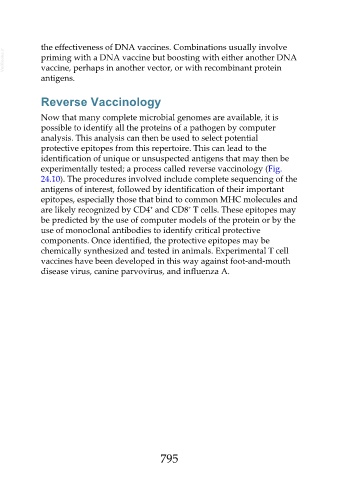Page 795 - Veterinary Immunology, 10th Edition
P. 795
the effectiveness of DNA vaccines. Combinations usually involve
VetBooks.ir priming with a DNA vaccine but boosting with either another DNA
vaccine, perhaps in another vector, or with recombinant protein
antigens.
Reverse Vaccinology
Now that many complete microbial genomes are available, it is
possible to identify all the proteins of a pathogen by computer
analysis. This analysis can then be used to select potential
protective epitopes from this repertoire. This can lead to the
identification of unique or unsuspected antigens that may then be
experimentally tested; a process called reverse vaccinology (Fig.
24.10). The procedures involved include complete sequencing of the
antigens of interest, followed by identification of their important
epitopes, especially those that bind to common MHC molecules and
+
+
are likely recognized by CD4 and CD8 T cells. These epitopes may
be predicted by the use of computer models of the protein or by the
use of monoclonal antibodies to identify critical protective
components. Once identified, the protective epitopes may be
chemically synthesized and tested in animals. Experimental T cell
vaccines have been developed in this way against foot-and-mouth
disease virus, canine parvovirus, and influenza A.
795

